
 Flash News
Flash News
A stable in Fier is engulfed in flames, agricultural equipment and haystacks are burned
Taulant Xhaka is introduced as a player-coach of the Albanian team in Switzerland
Iranian Foreign Minister Admits Serious Damage to Nuclear Power Plants
He bought votes for his daughter, SPAK takes the father of the PSD candidate to trial
Russia prepares summer offensive with help from North Korean troops in Ukraine

Iran spent decades building the so-called axis of resistance, made up of its armed regional proxies.
This network constitutes the main engine of Tehran's efforts to oppose Israel and the United States and to exert its influence throughout the Middle East.
But the fall of the government of Syrian President Bashar al-Assad - an ally of Tehran - caused irreparable damage to the network, experts say.
For Iran, Syria provided an important land corridor to the Levant - the region that provided logistical support to the Axis.
The corridor, also known as the Shiite Crescent, connected Tehran with the Lebanese armed group Hezbollah - an important ally and, at the same time, an integral part of the axis.
“There is no axis without access,” says Ali Vaez, director of the Iran Project at the International Crisis Group in Brussels.
"Losing the ability to support Hezbollah with logistics means losing Iran's strategic depth," he said.
Noting the importance of Syria, Iran spent billions of dollars to keep Assad in power.
Tehran intervened militarily in Syria's civil war in 2013 and played a key role in supporting Assad's forces.
He deployed hundreds of Islamic Revolutionary Guard Corps (IRGC) officers to recruit and train tens of thousands of Shiite fighters - both domestic and foreign.
After the loss of the land corridor connecting axis members from Iran to Lebanon, “we are likely to see much reduced resistance in the coming months and years,” says Farzan Sabet, senior research fellow at the Geneva-based IHEID Institute.
The Axis, according to him, will have "a significantly lower capacity to conduct military operations in the future."
At its peak, the axis was active in the Occupied Palestinian Territories, Lebanon, Iraq, Syria, and Yemen, and was intended to provide Iran with the ability to strike its enemies abroad.
But his approach suffered a series of striking setbacks in recent months.
Syria is now effectively run by the Hayat Tahrir al-Sham (HTS) organization - designated a terrorist organization by the US - and its allies, some of whom are linked to Turkey, Iran's rival.
HTS took power in Damascus on December 8.
Hezbollah, on the other hand, was severely weakened after the year-long war with Israel, which killed the group's leader, Hassan Nasrallah.
Israel's devastating war in the Gaza Strip also diminished the capabilities of Hamas - a terrorist organization designated by the US and other powers and a member of the axis.
Events in Syria "will certainly further limit Iran's ability to maintain its regional influence," says Raz Zimmt, a senior fellow at the Institute for National Security Studies in Israel.
Regionally weakened, Iran must now make difficult decisions, including reconsidering its defense strategy and perhaps even developing a nuclear bomb, experts say.
Zimmt says Iran has two “very bad options” – do nothing and accept that its defenses against Israel have been compromised, or build nuclear weapons and expose itself to the possibility of an Israeli attack.
Things look equally bleak for the axis of resistance, says Sabet, adding that Tehran will be under pressure to limit its regional activities.
Sabet says Iran will try to exploit any possible chaos in the region, including post-Assad Syria, to restore its influence.
"If the civil war in Syria is not resolved quickly and a new order is not established, that country could become exactly the type of environment where the Islamic Republic has historically thrived," Sabet says./ REL
Latest news

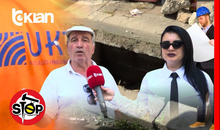
Residents of Astir denounce the mixing of drinking water with sewage
2025-06-27 22:29:46
The counterfeiter of the nation
2025-06-27 21:58:15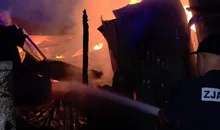




Trump speaks again about Kosovo and Serbia: they are about to clash in a big war
2025-06-27 21:10:27
Tragedy in France/ Plane crashes, 3 people die
2025-06-27 20:54:17
BIRN: Here's who covered Rama's private jet trip to The Hague airport
2025-06-27 20:40:58

Adorable or just plain weird? How Labubu dolls took over the world
2025-06-27 20:07:29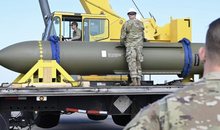
Analysis/ How did the US use penetrating bombs on Iran's nuclear facilities?
2025-06-27 20:01:37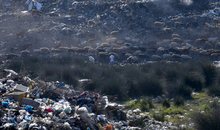
Tourist Vlora with waste incineration!
2025-06-27 19:41:46

Cristiano Ronaldo renews contract with Al Nassr until 2027
2025-06-27 19:17:59

Iranian Foreign Minister Admits Serious Damage to Nuclear Power Plants
2025-06-27 18:50:21


Michelle Obama reignites divorce rumors with Barack Obama
2025-06-27 18:10:15



Ukraine seeks Zelensky-Putin meeting after talks on humanitarian issues
2025-06-27 17:16:08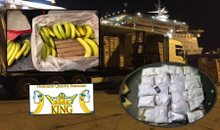

Car hits 16-year-old with motorcycle in Vau e Dejës
2025-06-27 16:36:06
Italian tourist dies of cardiac arrest in Zvërnec
2025-06-27 16:26:10
Russia prepares summer offensive with help from North Korean troops in Ukraine
2025-06-27 16:15:18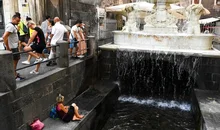

Bad news for migrants, Germany temporarily suspends family reunifications
2025-06-27 15:46:05
Alizoti: Here's when the internal analysis in the DP will begin
2025-06-27 15:33:59

Four reasons why you can't sleep at night
2025-06-27 15:08:40
Two elderly men rape 38-year-old woman in Tirana
2025-06-27 14:59:36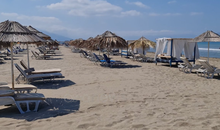
Italian dies on Zvërnec beach
2025-06-27 14:49:14
Love at first sight and separation, unpredictable July for signs!
2025-06-27 14:31:49
Veliaj 'fights' corruption allegations with PR campaign on TikTok
2025-06-27 14:23:10
Gas cylinder explodes in Shëngjin, injuring a woman
2025-06-27 14:09:39
Environmental scandal in Vjosa, prosecution of oil decantation responsibility
2025-06-27 13:58:57
Gray hair is not caused by age, stress burns pigment cells from the inside
2025-06-27 13:50:02
33-year-old man found dead in Elbasan
2025-06-27 13:36:26


Criminal who helped inspire 'Stockholm syndrome' theory dies
2025-06-27 13:19:50


Guard found hanging in the building where he worked in Vlora
2025-06-27 12:51:44
Party political interest versus national interest
2025-06-27 12:43:06
Tabaku: The crisis in the pockets of Albanians is a consequence of misgovernment
2025-06-27 12:30:38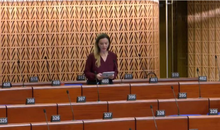


CEC distributes mandates for MPs in 4 districts
2025-06-27 12:02:23



Haxhiu: If I don't get 61 votes in a secret ballot, I will withdraw
2025-06-27 11:24:32
Access to the e-mails of 3 SPAK prosecutors, Zamblak Gjonaj remains in prison
2025-06-27 11:06:45

Flamur Noka appears in SPAK
2025-06-27 10:40:04




Accused of being part of a criminal group, 23-year-old arrested in Vau e Dejës
2025-06-27 09:41:31
What does Kosovo risk from the lack of new institutions?
2025-06-27 09:32:57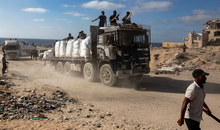
At risk of starvation, Israel closes aid route to Palestinians in Gaza
2025-06-27 09:21:58

Consecutive earthquake tremors in Tirana
2025-06-27 09:02:51
Does baking soda help with diabetes problems?
2025-06-27 08:53:29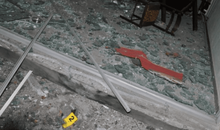
TNT explosion in a shop in Fushe Kruja
2025-06-27 08:46:49

Horoscope, what do the stars have in store for you today?
2025-06-27 08:20:01
Weather forecast, how temperatures will change during the day
2025-06-27 08:04:57
Morning Post/ In 2 lines: What mattered yesterday in Albania
2025-06-27 07:52:35

Race for the head of BKH/ Bushati: Only those who bow down make a career
2025-06-26 22:41:37
Lapaj: We can merge into a party with 'Nisma Thurje'
2025-06-26 22:25:53
Vote recount, Lubonja: Electoral manipulation took place before May 11
2025-06-26 22:12:23
Health Center inside the sports field, the wonder of the next project in Lushnje
2025-06-26 22:00:10


"The Task Force acted selectively"/ Bushati: SPAK was a government tool!
2025-06-26 21:33:19



Accident in Lezha, 69-year-old loses control and hits 4 parked vehicles
2025-06-26 20:51:34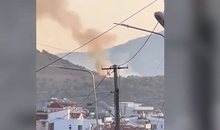


KPA upholds dismissal of judge Avni Sejdi
2025-06-26 20:15:54

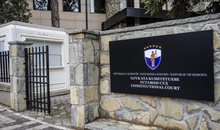

Accident in Lezha, car ends up in the parking lot of a playground
2025-06-26 19:35:03
Special court for the war in Ukraine, Zelensky signs the agreement in Strasbourg
2025-06-26 19:17:43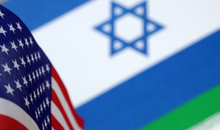



Report/ Albanian healthcare between limited transparency and under-financing
2025-06-26 18:34:34
